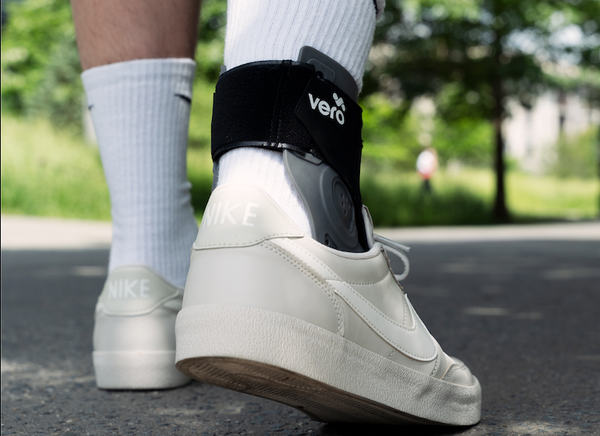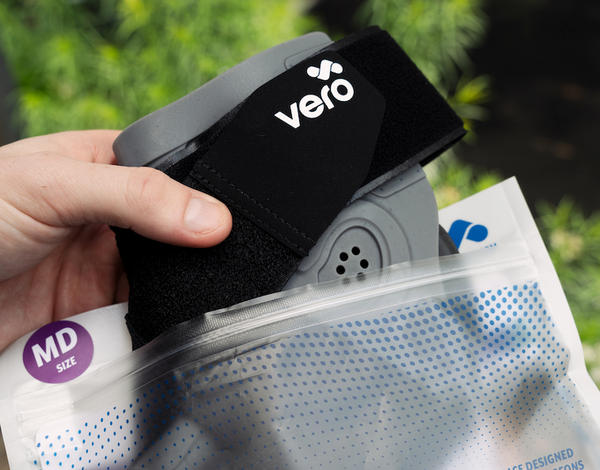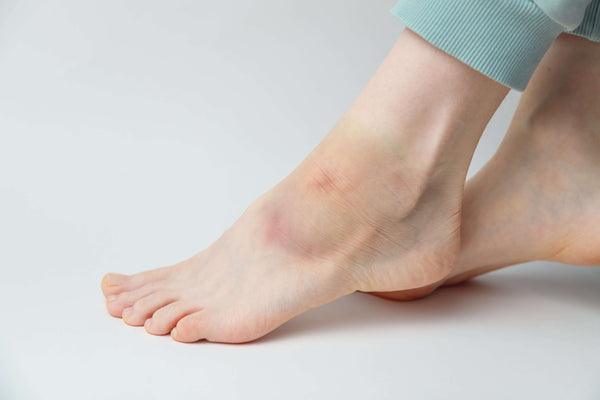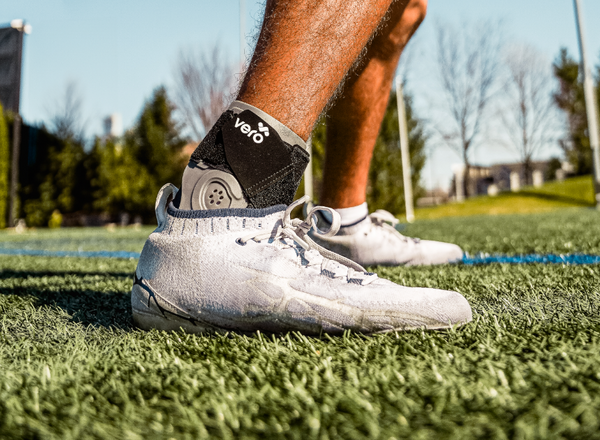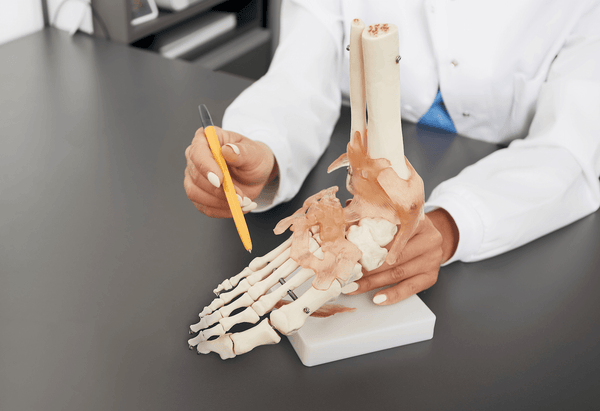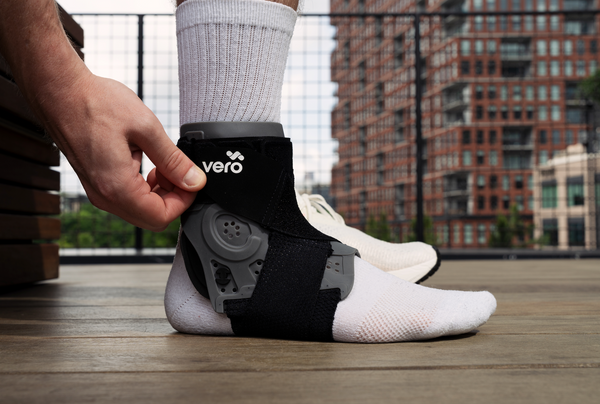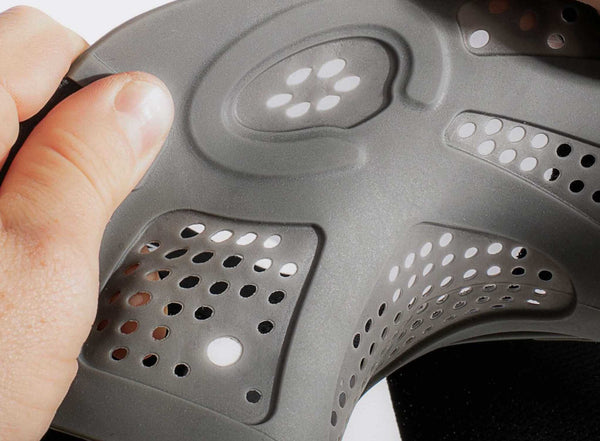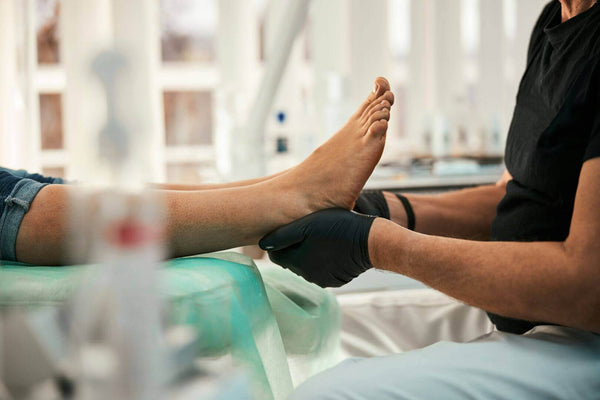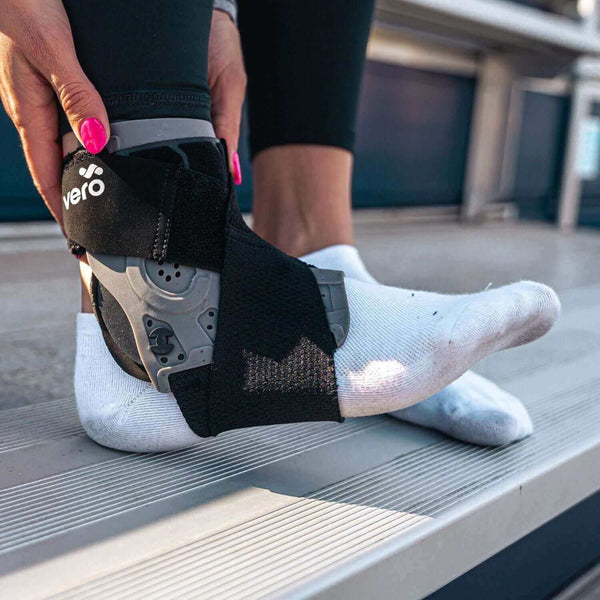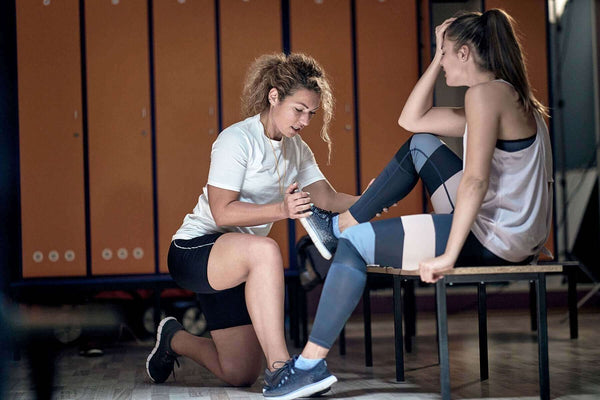Ankles are some of the most vulnerable joints in the human body. Whether you're an athlete, a parent chasing toddlers, or simply walking to work, they’re essential to daily movement. When something goes wrong, it can disrupt your entire routine. From sprains and fractures to chronic instability or post-surgical recovery, understanding how to care for this critical joint—with the help of medical professionals, accurate information, and smart support like the Vero Ankle® Brace—is key to long-term lower-body health.
In this guide, we cover the medical side of ankle care, with tips that can help you make more informed decisions, communicate better with your provider, and improve outcomes after an injury or surgery.
Effective Communication with Your Healthcare Provider about Ankle Issues
One of the most important steps in managing ankle health is knowing how to effectively communicate with your healthcare provider. Whether you’re seeing a general practitioner, physical therapist, or orthopedic specialist, being able to clearly describe your symptoms, history, and goals can make a significant difference in your diagnosis and treatment plan.
Start by preparing a detailed timeline of your ankle issues. Note when the pain or instability began, whether there was a specific incident (like rolling your ankle), and how your symptoms have changed over time. Include information about swelling, bruising, stiffness, and range of motion. Don’t forget to describe how your condition impacts your daily activities—this helps clinicians understand the real-world implications of your injury or condition.
Be honest and specific when asked about pain. Use descriptive language: is it sharp, dull, throbbing, or burning? Is it constant or intermittent? These details can help pinpoint whether the issue is muscular, skeletal, or neurological. Ask questions to understand your provider’s recommendations and ensure you’re clear on the next steps. This might include diagnostic imaging, physical therapy, or bracing. Here are some example questions:
-
What diagnostic tests will confirm my condition?
-
What are the treatment options and risks?
-
What activities should I avoid?
-
Do I need physical therapy or bracing?
The Vero Ankle® Brace is often recommended by orthopedic professionals, and having it as part of your treatment conversation can signal to your provider that you’re proactive about your recovery. Understanding your brace’s function and asking your doctor how it fits into your recovery plan will help you get the most from your treatment.
Understanding Different Types of Health Insurance for Ankle and Sports Injuries
When it comes to paying for ankle-related medical expenses, Health Savings Accounts (HSAs) and Flexible Spending Accounts (FSAs) can offer a tax-advantaged way to manage costs. Both accounts allow you to set aside pre-tax income specifically for qualified medical expenses, which can include everything from copays and physical therapy to durable medical equipment such as ankle braces.
HSAs are typically paired with high-deductible health insurance plans and can be rolled over year to year, making them a smart option for those who want to save long-term for healthcare needs. FSAs, on the other hand, are usually offered through an employer and must be used within a designated plan year, though some plans allow a short grace period or partial rollover.
If you’ve experienced an ankle injury—such as a sprain, tendonitis, or post-surgical recovery—these accounts can be used to purchase treatment essentials like physical therapy sessions, imaging (X-rays, MRIs), and supportive gear like the Vero Ankle® Brace. Because the Vero Ankle® Brace is often classified under eligible medical expenses, you can use your HSA or FSA funds toward its cost without needing to pay out-of-pocket with post-tax dollars.
To confirm eligibility, check with your HSA or FSA administrator and be sure to keep your receipts for reimbursement. In some cases, you may be asked to provide a letter of medical necessity or a prescription from your healthcare provider. Leveraging these accounts ensures you’re maximizing your healthcare dollars while investing in tools that can support faster and more complete recovery.
What to Expect from Ankle Surgery: Preparation, Procedure, and Recovery
If conservative treatments fail or if you’re dealing with a severe ankle condition, surgery may become necessary. While the idea of surgery can be daunting, being well-informed about the process can help reduce anxiety and improve your outcome. Most ankle surgeries fall into a few categories: ligament repair (commonly for chronic instability), fracture fixation, arthroscopy (to remove debris or repair cartilage), and joint fusion or replacement for advanced osteoarthritis.
Preparation starts with a consultation, diagnostic imaging, and sometimes pre-surgical physical therapy to strengthen the area. You’ll likely need to fast before surgery and may be under general or regional anesthesia depending on the complexity of the procedure. Most surgeries are outpatient, but some require a short hospital stay.
Recovery depends heavily on the procedure performed. Expect an initial period of immobilization using a cast, boot, or brace, followed by gradual weight-bearing as guided by your surgeon or physical therapist. Physical therapy will be critical in regaining strength, flexibility, and proprioception. Many patients use the Vero Ankle® Brace during the transition from immobilization to active recovery. Its customizable compression and removable stirrups help provide the right level of support at each phase of healing.
Long-term success requires consistency with rehab exercises, follow-up visits, and proper bracing. Adhering to post-surgical protocols reduces the risk of complications such as re-injury or chronic instability. As a brief recap and overview:
Before Surgery
-
Discuss procedure details, expected outcomes, and downtime.
-
Arrange transportation and post-op support at home.
-
Consider prehab (pre-surgical rehab) to strengthen surrounding muscles.
During Surgery
-
Most ankle surgeries are outpatient, but recovery still takes time.
-
Surgeons may use screws, plates, or grafts depending on your injury.
After Surgery
-
You’ll likely begin with a cast or boot, transitioning to partial weight-bearing.
-
The Vero Ankle® Brace is often recommended in later stages for dynamic support and controlled mobility.
-
Physical therapy is key to regaining strength, balance, and flexibility.
Decoding Medical Terminology Related to Ankle Injuries and Treatments
Understanding medical terminology can make your healthcare experience less intimidating and far more empowering. When dealing with ankle issues, you’ll often hear terms like “sprain,” “strain,” “tendonitis,” and “instability,” but what do these actually mean?
A sprain refers to the overstretching or tearing of ligaments—the tough bands of fibrous tissue that connect bones to other bones. The most common type is a lateral ankle sprain, which affects the ligaments on the outer side of the ankle.
A strain, on the other hand, involves muscles or tendons. Although similar in cause, strains generally refer to issues within the soft muscle tissue, whereas sprains are ligament-based.
Tendonitis is inflammation of a tendon, and the Achilles tendon is the most commonly affected in the ankle. This condition can result from overuse, poor footwear, or bio-mechanical issues.
Edema means swelling due to fluid buildup, and effusion refers to fluid inside a joint capsule.
Instability often results from repeated sprains and refers to the ankle’s tendency to give way during activity.
The ATFL, or Anterior Talofibular Ligament, is the most commonly sprained ligament in the ankle and is located on the outer side, connecting the fibula to the talus bone. It is particularly vulnerable during inversion injuries when the foot rolls inward.
The subtalar joint is located just below the ankle joint and allows the foot to move side to side, such as when walking on uneven ground or adjusting balance. It plays a crucial role in overall foot stability and adaptability during movement.
Arthrodesis is a surgical procedure in which two bones are fused together, typically to relieve severe pain from arthritis or instability. In the ankle, arthrodesis eliminates joint motion in order to improve function and reduce chronic discomfort.
If you're unsure about terms in your treatment plan or medical notes, don’t hesitate to ask for clarification. Accurate understanding empowers better decisions.
Choosing the Right Specialist for Your Ankle Condition
Primary care doctors are a great starting point, but ankle-specific issues often require a specialist. Here's who you might see:
-
Orthopedic Surgeon: For fractures, ligament repair, and structural issues.
-
Podiatrist: Specializes in feet and ankle biomechanics.
-
Sports Medicine Physician: Good for chronic or overuse injuries.
-
Physical Therapist: Key for recovery, rehabilitation, and injury prevention.
Look for providers who regularly treat ankle injuries, especially if you're an athlete or have ongoing instability. Providers who work with performance bracing like the Vero Ankle® often have more nuanced treatment plans.
Navigating Follow-Up Care and Long-Term Management for Ankle Health
The path to full recovery doesn’t end with the resolution of acute symptoms. Long-term management of ankle health involves regular follow-ups, consistent home care, and ongoing prevention strategies. Most healthcare providers will recommend a series of follow-up visits after an injury or surgery to assess healing, monitor progress, and adjust treatment as needed.
During these visits, expect range-of-motion tests, strength assessments, and possibly imaging to evaluate healing. Your provider may suggest modifications to your physical therapy plan or introduce new treatments like regenerative therapies, massage, or bracing. Compliance with home exercises is critical; skipping this part of the process increases the risk of chronic instability or re-injury.
For chronic conditions such as arthritis or tendonitis, flare-ups may occur. Recognizing early symptoms and reintroducing supportive tools—such as the Vero Ankle® Brace—can help manage discomfort and prevent regression. Wearing the brace during high-impact activities or prolonged standing offers protection and relief, extending your mobility over time.
Long-term ankle care is crucial to prevent reinjury or chronic pain. Make sure you:
-
Attend all follow-up appointments and therapy sessions.
-
Follow instructions on loading, stretching, and exercise timelines.
-
Watch for signs of instability, stiffness, or recurring pain.
Consider keeping a health journal to track your symptoms, activity levels, and any treatments used. This log can be valuable for your provider in tailoring your care and preventing further issues. Ankle health is a long game, and proactive management pays off.
How the Vero Ankle® Brace Helps
The Vero Ankle® Brace was developed by orthopedic surgeons who understand the biomechanics of the ankle and the complexities of injury recovery. Unlike generic braces that provide uniform pressure and limited motion, the Vero Ankle® Brace is engineered with BioMemory™ materials that adapt to your anatomy and deliver dynamic support that evolves as you heal.
This means the brace doesn’t just stabilize—it actively supports healthy motion. Its removable stirrups offer progressive support, transitioning from rigid stabilization during acute injury phases to more flexible movement during rehab. The compression components aid circulation and reduce inflammation, while the low-profile design fits easily into shoes for consistent use throughout your day.
Whether you’re recovering from a sprain, managing chronic tendonitis, or navigating the aftermath of surgery, the Vero Ankle® Brace provides the structured, orthopedic-grade support needed for every phase of healing. It bridges the gap between clinical care and real-life mobility, empowering you to move confidently and recover fully.
Key Benefits of the Vero Ankle® Brace
-
Customizable support with removable stirrups
-
Compression to reduce swelling
-
Alignment support to prevent re-injury
-
Ergonomic fit for everyday wear
Whether you're recovering from surgery, managing a chronic condition, or trying to prevent your next rolled ankle, the Vero Ankle® Brace offers medically informed, real-world protection.
Your ankles carry you through life—investing in their health is worth it. With the right medical support, insurance planning, understanding of terminology, and tools like the Vero Ankle® Brace, you can stay strong, steady, and in control of your recovery.


